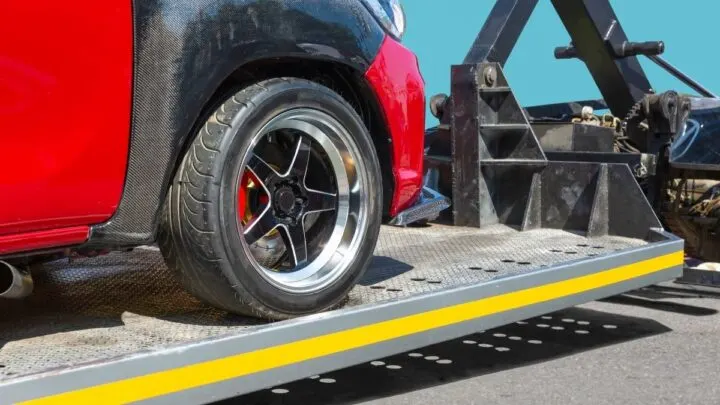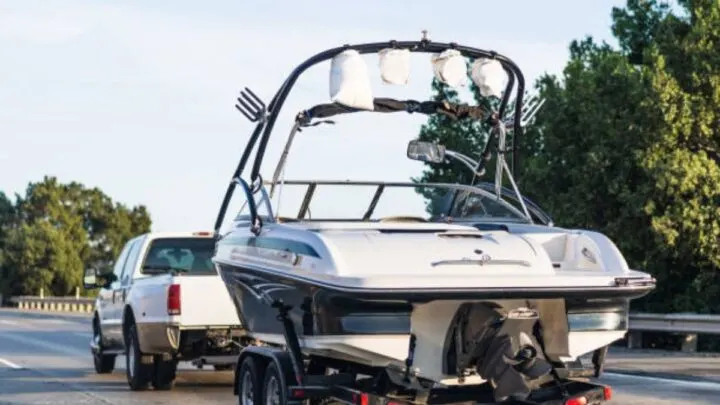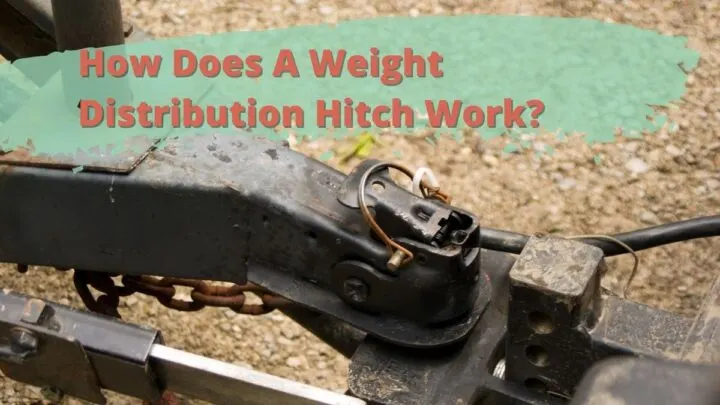When you are towing a trailer behind your vehicle, having the proper weight distribution is vital for a number of reasons, many of which involve keeping you and your passengers’ safe while on the road.
To accomplish this, a weight distribution hitch is often used. What is a weight distribution hitch, and how does it work? Let’s find out.
How Does a Weight Distribution Hitch Work?
When you install a weight distribution hitch on your vehicle, its primary purpose is to make sure the tongue weight of your trailer goes no higher than 15 percent of your total load. Doing so helps you maintain much better control of your vehicle!
When a weight distribution hitch is not used, numerous things can occur.
First, you could wind up having a weight distribution between your vehicle and the trailer that is actually too small, which could result in the trailer swaying uncontrollably.
In some situations, not having a hitch could mean too much weight is directed at the front of the trailer, which will cause the trailer’s front end to nosedive, making it almost impossible for you to maintain control of your vehicle.
How Do Weight Distribution Hitches Work?
When your vehicle has a weight distribution hitch, the key to distributing the weight evenly will be the spring bars.
The spring bars will be able to apply leverage to both sides of the hitch. This will transfer the load weight you are pulling behind your vehicle to all the axles on your vehicle as well as those on the trailer.
This will prevent the trailer from nosediving, ease stress on your vehicle’s rear axles, and give you far greater control over your vehicle. As an added bonus, it will also allow you to tow at the maximum capacity allowed by your hitch.
Along with the hitch receiver, which must be rated as a Class III, IV, or V, other components of the weight distribution system are the aforementioned spring bars, frame brackets, weight distribution shank, and weight distribution head assembly.
The hitch receiver, which attaches to your vehicle’s frame, contains the opening that the shank slides into. The shank, which will be the attachment point for the head assembly, is not a one-size-fits-all part.
Instead, it comes in various lengths, rises, and drops, allowing you to make sure you have a shank that keeps your trailer level with your vehicle.
The head assembly will be where you mount the hitch ball and will attach to the shank. Head assemblies can differ, so make sure you choose one that will be well-suited for your tow vehicle. Once the head assembly is attached, this will let you dial in the amount of leverage placed on the hitch ball.
As we stated earlier, the spring bars make sure the tow load is distributed evenly among all axles on your tow vehicle and the trailer. Finally, the frame brackets mount to your trailer’s frame and hold the spring bars in place.

Benefits of Weight Distribution Hitches
Weight distribution hitches offer a number of important benefits when you are towing a trailer.
First, the hitch will give you much greater control over your vehicle, especially when steering or making turns. It will also keep your vehicle and the trailer more stable and level, lessening the chances your vehicle or the trailer will “bottom out” when hitting a bump in the road.
Since your vehicle will be more stable and level, this will also give you a much better view of the vehicles, people, or other obstacles that may be in front of your vehicle.
When your vehicle is not level, this results in it pointing upward, making your headlights less effective and obscuring your view while behind the wheel.
Last but certainly not least, installing a weight distribution hitch will prevent trailer sway.
Should this occur, especially when you are traveling at higher speeds or trying to negotiate a curvy road, you are at much greater risk of having your vehicle and trailer rollover, which could result in a catastrophic accident.
When Do You Need a Weight Distribution Hitch?
In most states, a weight distribution hitch is required by law if you are planning to tow a trailer behind your vehicle. If the load you will be towing will be greater than 50 percent of your vehicle’s weight, a weight distribution hitch will be required by law.
For example, if your truck weighs 4,000 pounds, you would need a weight distribution hitch if your towing load would be 2,001 pounds or more.
You will also need a weight distribution hitch if you want to tow at your vehicle’s maximum towing capacity. Since this varies from vehicle to vehicle, always check your vehicle’s owner’s manual.
However, also remember that installing a weight distribution hitch will not allow you to exceed your vehicle’s maximum towing capacity. If you try to do so and have an accident, you could face severe liability issues.
Does a Weight Distribution Hitch Reduce Tongue Weight?
Yes, this is the primary job of the weight distribution hitch. When you install one of these hitches on your vehicle, you can expect to have the tongue weight reduced to between 10-15 percent of the total weight load.
When tongue weight is reduced to such low levels, this puts far less stress on the rear axles of your tow vehicle, as well as the axles on your trailer.
If the weight were not lowered in such a manner, it would increase the chances your vehicle or your trailer could suffer broken axles, which is the last thing you want to be dealing with as you embark on vacation or are performing certain jobs or other tasks.
Do Weight Distribution Hitches Really Work?
Absolutely, and quite well we may add. When you install a weight distribution hitch on your vehicle, you will notice an immediate change the next time you hook up your trailer and head down the road.
To begin with, you should have a much better view of the road ahead, since your headlights will not be pointing towards the sky.
Also, if you have had to fight with your steering wheel to keep your vehicle under control when towing a trailer, this will also stop.
When you try coming to a stop when towing your trailer, a weight distribution hitch will also make this much easier and safer.
Your vehicle and trailer will also likely never “bottom out” while on the road, since the even distribution of weight will ensure no sagging is taking place.
If you tow larger loads, the weight distribution hitch will also help you tow at higher capacity levels, meaning you should be able to meet but not exceed your vehicle’s maximum towing capacity.

Why Can’t You Back Up with a Weight Distribution Hitch?
With most weight distribution systems such as these, trying to back up when the system is still attached to your vehicle and trailer will result in damage to the hitch and other system components.
If you are wanting to back up a short distance in a straight line, such as to park your camper in a parking space or at a campground, you can usually do this without damaging the system.
However, if you will need to make any turns while going in reverse, this will usually require you to first disengage the sway bars. If you don’t, they could be bent or broken while you are going backward.
Is a Weight Distribution Hitch Expensive to Purchase?
Generally, a weight distribution hitch will not be extremely expensive to purchase, although it also won’t come cheap. If you opt for a lower-quality hitch that can be clamped to your vehicle, you can often find these for no more than $200.
However, we tend to recommend you spend between $500 to $1,000 for a weight distribution hitch that can be screwed onto your vehicle.
It will last longer, help you reach maximum towing capacity, and give you added peace of mind when you are driving down the highway!
Do Weight Distribution Hitches Wear Out Over Time?
This will depend on the quality of your weight distribution hitch, how often you use it for towing, and if you take the proper precautions while towing your trailer. For most weight distribution systems, there is no specific timeframe for how long they will last.
Thus, if you spend $1,000 on a weight distribution hitch, there is a good chance that with the proper care and maintenance, it could last a decade or much longer.
Since most states require the use of a weight distribution hitch, we think it makes sense for you to install one on your vehicle as soon as possible.
When you do, trailer sway will disappear, steering and braking will become much easier than before, and you won’t have to worry about hitting a bump in the road that causes your trailer to dip, all of which will put your mind at ease.
